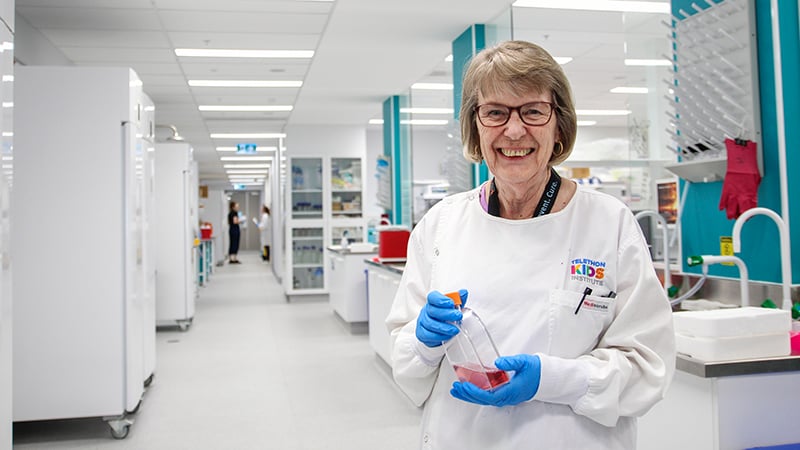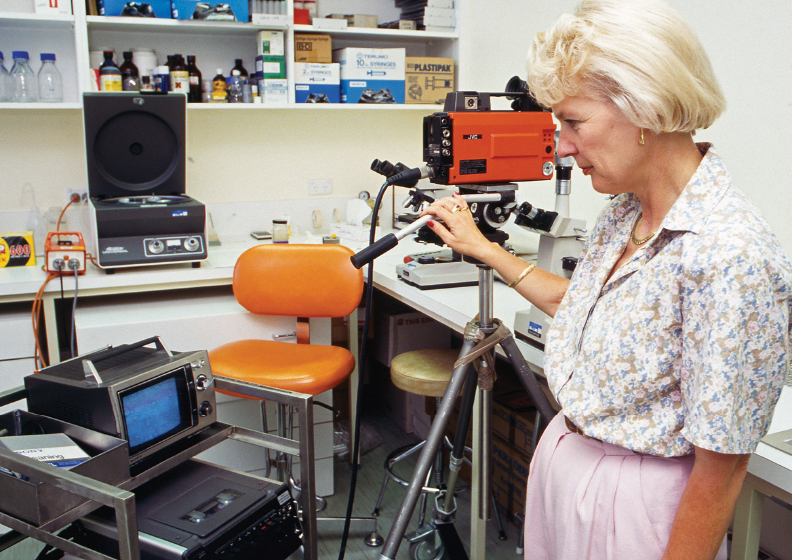Humble beginnings produce wonderful results
Within months of starting at the new cancer research unit Jette Ford had established her first cell line.
Since then, as part of the Telethon Kids Cancer Centre which emerged from the fledgling unit, she has nurtured 116 cell lines out of 1,000 patient samples, overseen the arrival and management of a growing array of cutting-edge technologies – including Western Australia’s first liquid nitrogen tank – and built and cared for the Institute’s extensive biobank of paediatric cancer samples. Lab records reveal her handwriting on at least 9,000 samples – some going back to 1984.
Throughout it all, the research undertaken by Ms Ford and Professor Ursula Kees, focused predominantly on childhood leukaemia but also encompassing other paediatric cancers, was generously supported by the Children’s Leukaemia and Cancer Research Foundation (CLCRF) – which has raised millions of dollars to support this and other work within the centre over the years.
Longstanding CLCRF chairman Geoff Cattach was there when both Professor Kees and Ms Ford started. As the father of a 7-year-old boy with leukaemia, he was desperate for a cure and, with the Foundation, eager to support the new research focus.
Mr Cattach’s son Brent was just the third child in WA to successfully receive a bone marrow transplant as part of the then-revolutionary program begun by visionary PMH oncologist Dr Michael Willoughby in 1984. Professor Kees and Ms Ford were also involved, carrying out vital lab work as part of the program.
Brent, now 43, survived but has experienced long-term health issues as a result of the harsh leukaemia treatment typical of the day.
Mr Cattach said he was proud, through the CLCRF, to have had a key hand in supporting research which has helped to make leukaemia treatment gentler and more effective over recent decades.
“They’ve got children’s leukaemia to a stage now where it’s almost curable – not quite, but close to it,” Mr Cattach said.
If you could get to a stage where they could have a needle and prevent it, that would be even more amazing. In the meantime, the next best thing is knowing they can virtually cure it – and without the horrific problems attached to it that we had back in our day.
He said Ms Ford’s work had helped to shine a light on WA’s scientific strength.
“Once they started sending her cell lines overseas for people to do their research on, they couldn’t get hold of them quick enough – it was terrific publicity for WA as well.”
Mr Cattach has been CLCRF chair for 39 years now and – despite helping to care for both Brent and another son, Stewart, who survived two brain tumours – plans to continue fundraising efforts to support leukaemia research at Telethon Kids for a while yet.
“It’s been a labour of love and a long, hard road, but it’s been a wonderful result,” he said.

